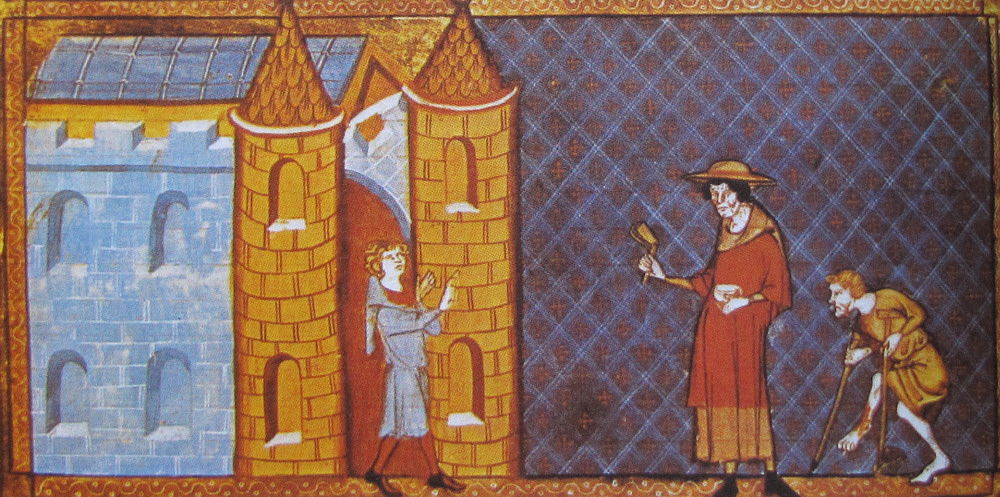10. LEPER HOSPITAL

This cross recalls that in the village of Craham there was a cemetery of lepers. Unfortunately, in the last century, its exact location has been forgotten. Nothing can now help us find it. This leprous cemetery served a leper colony, whose proximity to the Route de Bretagne would explain its presence here, slightly behind, for health reasons.
For lack of documents, we also know nothing about this establishment. Nevertheless, we can presume of its creation and functioning in a period running between the XII and the XIV century, when leprosy was virulent. The fear of its spread forbade the sick any contact with the population. Therefore, force it to live reclusively. This illness was perceived as a divine punishment or, on the contrary, as a redemption of sins. Damien Jeanne, author of the inventory of lepers in the diocese of Bayeux from the 12th to the 15th centuries, estimates that it affected 10% of the population and offered an average life expectancy of six years to the sick.
Given the surrounding settlements and the local population, Craham’s leper colony must have been modest in size. There were perhaps a few wooden huts, housing as many chapel served by a priest. He probably lived in a small house attached to the leper colony. In order to meet their needs, the lepers cultivated pieces of land around the settlement, in the form of gardens, ploughing or simple meadows.
Plague in the grove, another outbreak. Extract from the monograph of Saint Georges d'Aunay by Camille Jeanne. The plague broke out throughout the region of Basse-Normandie in March 1636, coming from the north, by Eu, Rouen and Bernay. The bocage was particularly tried. In the fields, tarred plank boxes were built to isolate the sick. Around these boxes, we made big fires of "pitch" and fat, to disinfect and sanitize the atmosphere. In spite of this precaution, mortality reached an enormous number in Saint George "200 sick people were found, eight to ten of whom died piously every day". A black flag was raised at the steeple to warn the travelers, and invite them to turn back. The year that followed 1637 was no less disastrous. Because of the shortage of labour, the bread was lacking, and famine caused great misery and a resurgence of mortality.
Other pandemics. In the 21st century, the population faced three major pandemics. The most terrible, known as the Spanish flu, occurred between 1918 and 1919, killing at least 40 million people, far more than the end of the First World War. Other pandemics have been less lethal: the 1957 Asian flu caused 4 million deaths and the Hong Kong flu caused 2 million deaths. A particularly virulent and contagious strain: H1N1. It is with the "34 million dead" black plague the deadliest pandemic in history.
